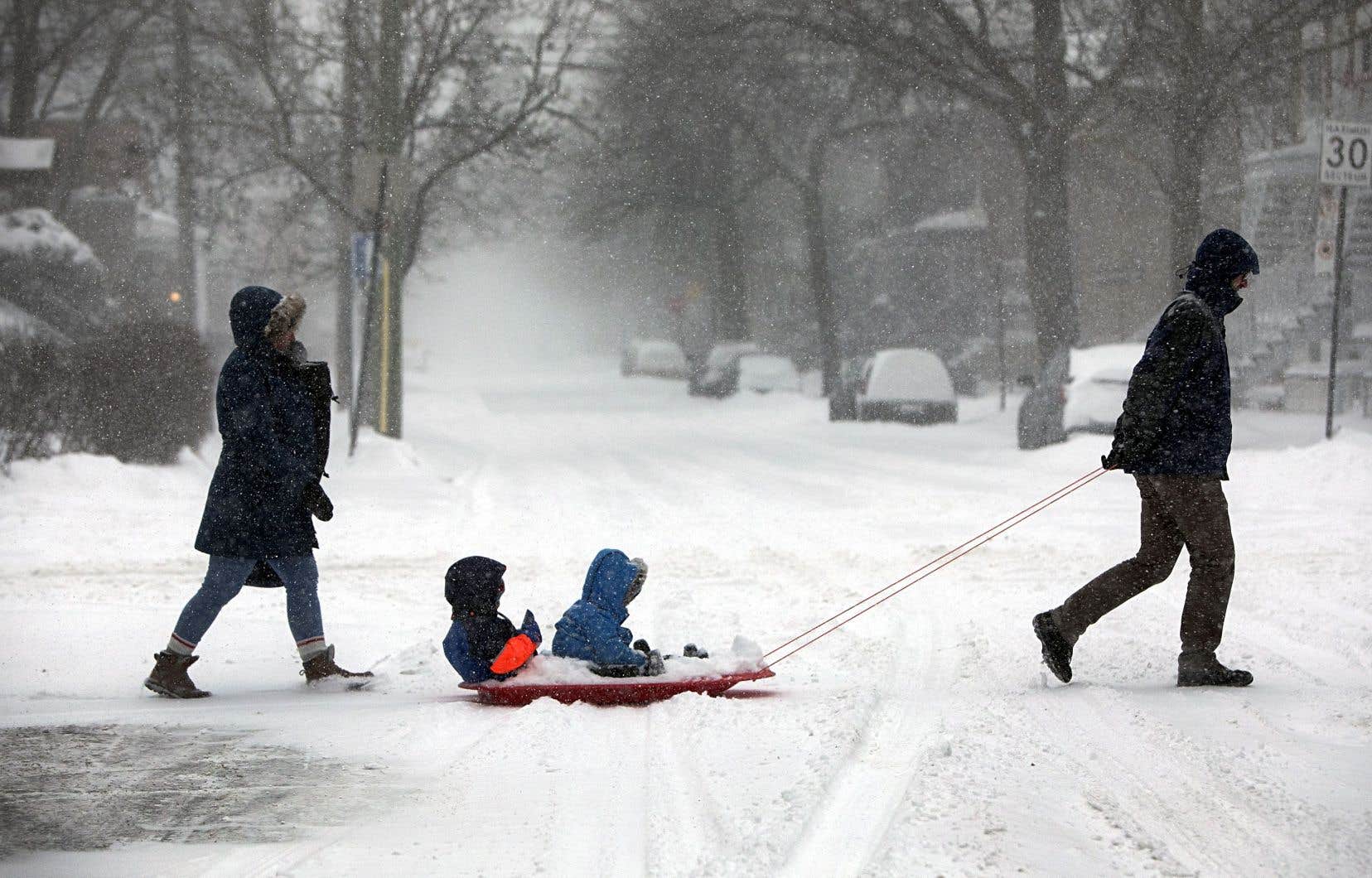Santa Claus may have to install wheels on his sleigh rather than skis when he makes his rounds in southern Quebec. If the 2023-2024 winter forecasts from MétéoMédia speak of a fairly normal winter in terms of precipitation and temperatures, bookmakers would be tempted to give odds of around 50-50 for a white Christmas in the south.
“Since the month of December is likely to be mild, with temperatures a little above normal, there will be periods above zero degrees. So we’re going to have some snow, but maybe some of it will melt. It will play out in the last days before Christmas,” explains the head of the meteorology service at MétéoMédia, André Monette.
Fortunately, the south of the province is not the center of the world, he points out. “It is certain that when we are more in regions like the Laurentians going towards Charlevoix, the chances of having a white Christmas are much higher and the temperatures will not be hot enough to melt all the covered in snow. » The sled skis will therefore have to be transported in the bottomless trunk of the merry man in red to take care of the rest of the province.
Mild, shorter winters
This trend towards the months of December being unsuitable for winter sports in southern Quebec has been evident for several years. “The winters are much milder, the months of December warm up more quickly and having a cover of snow in December, it starts to be more and more difficult. However, there are exceptions. We can have a very snowy month of December. »
This is how global warming is observed. “In general, when we look over 10, 20 or 30 years, the trend is towards milder and milder autumns, with winters arriving later and later. Summers are the same: they are longer and longer. We start to have heatwaves in May and September, which was much rarer before. »
An unusual El Niño winter
As for the rest, what will come after the festivities, the winter which is upon us will be “an unusual El Niño winter”, to use the expression of the meteorological service which, each year, ventures to predict the unpredictable .
Usually, an El Niño winter means a mild winter, under the influence of this climatic phenomenon which is characterized by abnormally high water temperatures in the eastern part of the South Pacific Ocean, near the coasts of Ecuador, from Peru and Chile.
Why unusual this time? This is because, even if this phenomenon should bring us a mild start to winter in December, it is accompanied by much more widespread and unusual heat elsewhere in the waters of the Pacific, which thus mixes up the cards and reduces the influence of El Niño.
A star vs an all-star game
“At MétéoMédia, we are going to distinguish El Niño this winter precisely because it is surrounded by warm water. El Niño, yes, these are warm temperatures, but since there is a lot of warm water elsewhere in the Pacific, the consequences for the heart of winter in January-February should be colder temperatures, closer to normal season unlike the first half. »
To make himself understood better, André Monette ventures an analogy with hockey. Imagine that El Nino is a Connor McDavid (or Bédard, depending on your preference). “If you have a big star on an average team, you will really see the effect of the big player. But if it’s an all-star game and it’s all stars, the effect isn’t going to be as noticeable. »
Return of normal cold in Quebec
Thus, MétéoMédia’s forecast for the future is a winter returned to normal once the holidays are over. And, like credit card statements, Hydro-Québec meter readings risk coming to haunt many after the lull in December.
“For the St. Lawrence Valley, we will be close to normal. But in the heart of winter, in January-February, normals are cold. It’s normal, we’re in Quebec. This will contrast with December which will have been rather mild,” warns the meteorologist.
Snow and possible surprises
What if we look at precipitation? Not much snow? Lots of snow ? Too much snow? According to André Monette, the most populated areas should receive quantities that are close to the norm, i.e. around 150 centimeters of snow in the Montreal region and 210 centimeters in the Quebec region, a snow bank which is becoming more higher as you go east.
However, the map produced by MétéoMédia shows much more intense storm activity under this corridor, he specifies, and we will not be safe from other gifts falling from the sky. “The path of larger systems is further south of us. On the other hand, the St. Lawrence valley is very close to the active corridor. It just needs to go up a little and we might have some surprises. But north of the river, areas are more remote and should have a little less precipitation in general. »
Finally, the meteorologist does not hide when the killer question arises, namely: how reliable have these predictions been in past years? “In general, I would say around 75% success,” he says with confidence. Let’s admit that this is a success rate that the service has nothing to be ashamed of.
